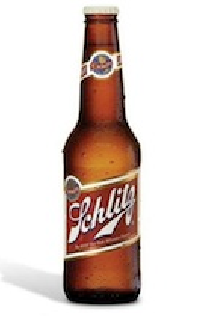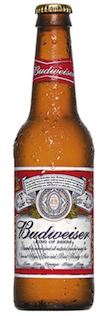Beer Brawl: The Birth Of The Brands
 For three-quarters of the twentieth century, two great brands stood toe-to-toe and slugged it out for the heavyweight title of America’s most popular beer. Then, to the astonishment of its loyal fans, one took off the gloves and pounded itself into oblivion in a few short rounds.
For three-quarters of the twentieth century, two great brands stood toe-to-toe and slugged it out for the heavyweight title of America’s most popular beer. Then, to the astonishment of its loyal fans, one took off the gloves and pounded itself into oblivion in a few short rounds.
Nearly four decades later, an admirable effort has been mounted to restore lost quality and resurrect a classic. But re-entering the ring has proven to be a difficult struggle, and the long term appears to be in doubt. Despite the selling power of baby boomer nostalgia, the move may have come too late–and the market may have changed too much–for most beer drinkers to give a Schlitz.
So pull up a stool. Pop open a cold one. And imagine yourself in a ringside seat for the fight of the century.
In this corner: Budweiser, the self-proclaimed “King of Beers,” brewed by the now legendary Anheuser-Busch of St. Louis, Missouri. Funny how times change. In the beginning, Anheuser-Busch looked like it would amount to little more than a short-lived, foamy flop.
In 1857, the son of a prosperous wine merchant left Germany for America. Eighteen-year-old Adolphus Busch was just another drop in a tidal wave of new immigrants from the Fatherland. Busch eventually settled in St. Louis, where invested his share of a family inheritance in a brewing supply company. One of Busch’s best customers was a successful soap manufacturer and fellow German immigrant named Eberhard Anheuser. Having received a failed brewery in lieu of repayment for a start-up loan, Anheuser was busy giving beer the old German try. Unfortunately, Anheuser’s acquisition had come with its own recipe. That recipe produced a brew so foul that  bartenders knew to step aside after serving a glass, the better to the avoid the spray as the customer spat it out.
bartenders knew to step aside after serving a glass, the better to the avoid the spray as the customer spat it out.
Adolphus Busch married Eberhard Anheuser’s daughter, Lilly, and took charge of the family’s snakebitten beer business. When Busch discovered that a family friend had the formula for a beer brewed by monks in the Bohemian village of Budweis, his company tweaked the recipe slightly, but kept the product’s original European name.
First brewed and sold by Anheuser-Busch in 1876, Budweiser was a trend-bucking light lager and the first mass-produced beer to be pasteurized. Those two characteristics significantly extended Bud’s shelf life, expanding its shipping range. Other brewers carped that pasteurization, which involved heating the product, degraded the taste of the beer. Customers disagreed. Budweiser enjoyed impressive growth, and Adolphus Busch emerged as one of America’s first, and most successful, turnaround artists.
And in this corner: brand Schlitz. “The Beer that Made Milwaukee Famous.” The only beer with “Gusto.” In an incredible coincidence, German immigrants Joseph Schlitz, Adolphus Busch and Frederick Pabst all married into the beer business. Schlitz acquired his Milwaukee brewery in the 1850s, after he wed the widow of its recently deceased founder. Having learned to turn tragedy into opportunity, Schlitz donated numerous kegs of his now-namesake brew to the beer-starved citizens of Chicago following the great fire of 1871. The flames had reduced many of the Windy City’s once-mighty breweries to rubble, and Schlitz lost no time turning Chicago into a major distribution center.
Like Missouri’s Busch family and his Milwaukee rival, Best-Pabst, Joseph Schlitz ignored the American tradition of brewing heavier beers for local consumption and set his sights on a far more ambitious goal: building a national brand with a far ranging, lighter lager. The bell sounded, and the bout was on.
The downside of tragedy caught up with Joseph Schlitz shortly thereafter. He died in a shipwreck in 1875. Ownership of the Schlitz brewery passed to the Uihlein brothers, nephews of the operation’s original founder. The Uihlein boys knew better than to mess with a good thing. By 1902, they were brewing a million barrels of beer a year. That made Schlitz the country’s top brewery, pushing former champ Pabst to number two. Though still fiercely competitive, Pabst slipped into third as Bud vs. Schlitz became the ultimate beer brawl. Bud took the title, only to have prohibition put everything on ice for over a decade.
By the time prohibition ended in 1933, many of America’s breweries were gone for good. But Budweiser, Pabst and Schlitz came out swinging, and Bud regained the championship. All three brands landed huge military contracts during World War II and enjoyed soaring popularity when the boys came home. Pabst emerged as the immediate post-war sales champ, but soon lost out to Schlitz. Bud launched a relentless comeback and squeaked ahead on the scorecard in the early fifties after Schlitz suffered through a long strike. Schlitz doggedly slugged its way back to the top, winning the title after Bud initiated an ill-advised price hike. Bud reversed the increase and edged ahead again, but Schlitz landed a powerful blow in the mid-60s with the introduction of the pull-tab. Round after round, it was a battle royal in every sense of the term. And then, somebody got greedy.
(This concludes Beer Brawl I: The Birth Of The Brands. Click here for Beer Brawl II: How Gusto Lost Its Mojo.)
WItzig
Thanks for a great brand history story, Bill. Just tweeted.
Andy A,
Very informative and an easy read. Did the success over local beer have anything to do with economy of scale — ie, were Bud-Schlitz-Pabst cheaper?
Bill
Not sure about early price advantages. Glass bottles were a very expensive luxury until the late 1800s. Most beer would have been shipped to taverns in kegs and sold by the glass or bucket. You would assume a glass of anything cost the same–the famous nickel beer. But many taverns were bankrolled or owned outright by the breweries. Anheuser-Busch was especially known for this strategy, which was eventually outlawed as a monopoly. So, company-owned taverns may well have offered special, lower prices on their brand. Technological advances in the 1970s allowed for the creation of larger breweries that generated significant economies of scale. Companies that had the cash to build the new breweries reaped the advantages in increased margins.
George B.
I was enjoying a glass of crisp white chard while reading this. It seems that monks are responsible for a lot of good beer as well as a lot of other spirited drinks. What did the monks do with their beer besides get loosened up to chant, compose literature and such? Perhaps Friar Tuck could shed some light on that. I bet the A-B folks are searching far and wide for the monks with the high gravity recipes that are currently pulling down their profits. In closing, may I say, Yazoo, Yazoo and more Yazoo!
jim
Very informative and entertaining. Going to school in Milwaukee in the ’70s we would hit the brewery tours (Schlitz on the hour/Pabst on the half hour) on Friday afternoons and sample the brew fresh out of the vats. It’s a shame that both of these Milwaukee institutions are now shuttered, with Miller the only one of the big three left standing in beer city.
Yolly
Beer, beer, and more beer–-one man’s marketing obsession. Well, This Is What I Think…
http://wellthisiswhatithink.wordpress.com/2013/05/12/beer-beer-and-more-beer-one-mans-marketing-obsession/
http://www.decisionsdecisions.com.au